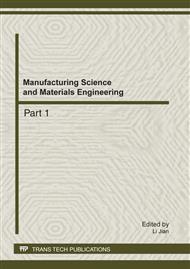p.401
p.408
p.412
p.418
p.424
p.430
p.437
p.442
p.447
Pollutant Transport Model and Numerical Simulation in Landfill Site
Abstract:
The simulation model for describing the transportation and transformation of landfill leachate pollutant in landfill, soil and underground water was established. Taking Wuhan Changshankou landfill for example, the numerical simulation was carried out. The simulation results showed that if there’s no any seepage control measure, the groundwater and soil under landfill will be polluted seriously after MSW was filled; the highest pollutant concetration in landfill was about 25000, and the one in groundwater and soil was about 20000; at the thirtieth year, the pollutant concetration in groundwater and soil still remained up to 10000 although the one in landfill was about 0. The simulation results also showed that the vertical stonewall can’t be used as a nature, and artificial seepage control system must be used.
Info:
Periodical:
Pages:
424-429
Citation:
Online since:
January 2012
Authors:
Keywords:
Price:
Сopyright:
© 2012 Trans Tech Publications Ltd. All Rights Reserved
Share:
Citation:


